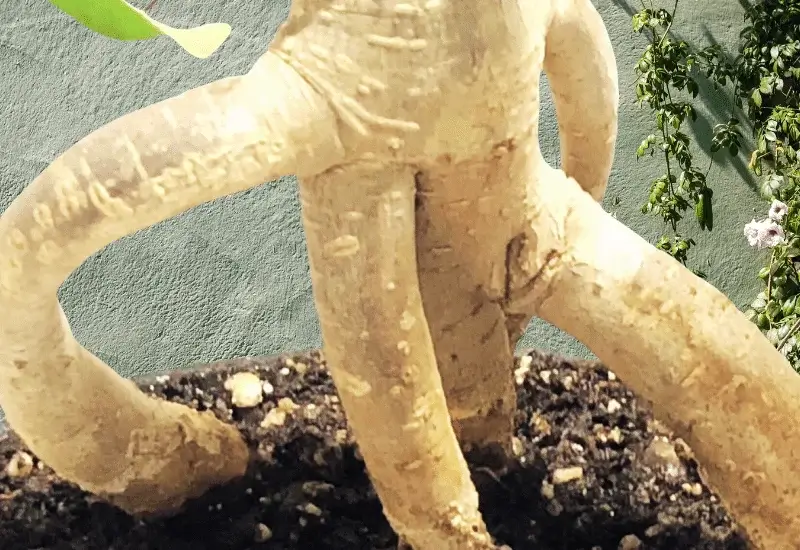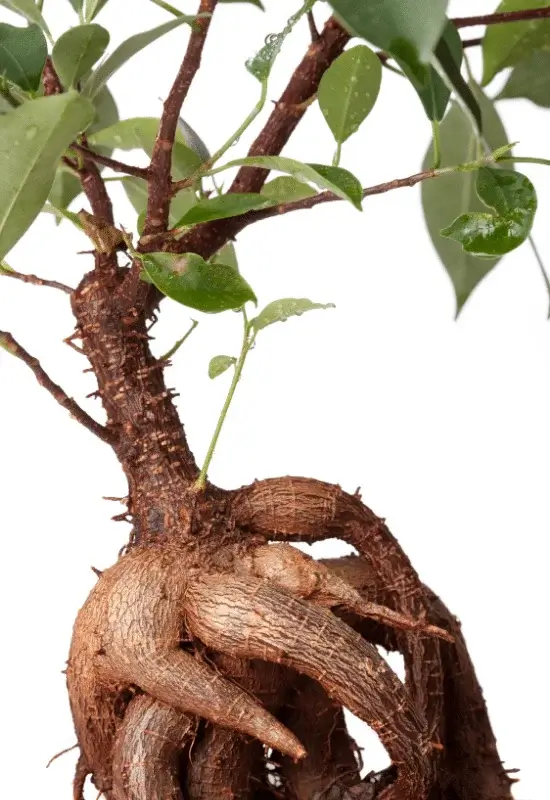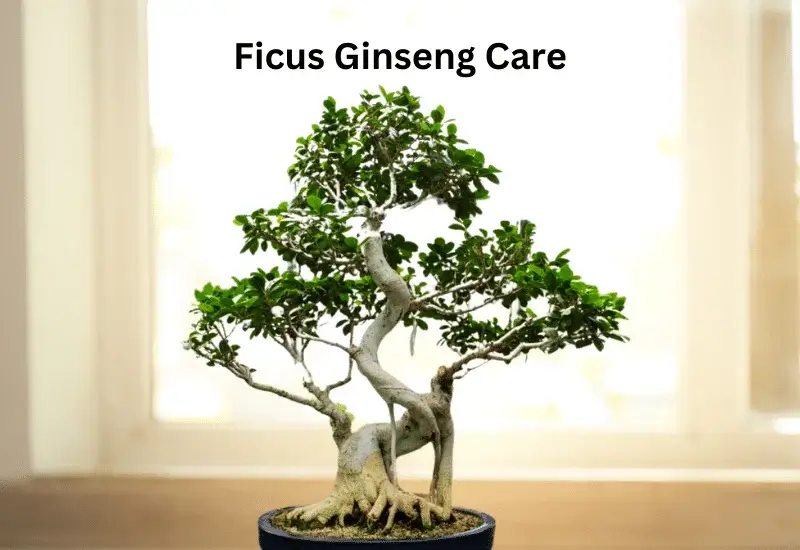Ficus Ginseng Care Guideline
Ficus Ginseng is a small tree that people like to grow in pots, making it like a little piece of nature in their homes. It’s known for its interesting-looking trunk, which is a bit chubby and looks like tree roots. This plant is popular because it brings a calming and natural touch to indoor spaces.
| Ficus Ginseng Care Quick Reference | |
| Light Requirements | Bright, indirect light |
| Temperature | 65-75°F (18-24°C) |
| Watering | Let the top inch of soil dry before watering |
| Soil and Pot | Well-draining soil, pots with drainage holes |
| Pruning | Regular pruning for shape and health |
| Fertilizing | Balanced, diluted fertilizer monthly during the growing season |
| Repotting | Every 2-3 years during spring |
| Pest Management | Regularly inspect for pests and diseases.Treat as needed with suitable remedies. |
| Aesthetic Styles | Choose bonsai styles and presentation |
| Seasonal Care | Adjust care routines according to the seasons |
Light and environment
Ficus Ginseng likes to be around sunlight but not direct sunlight. Think about it like this: it wants to be near a window with bright but not blazing light. The room temperature should be comfortable for you; if you’re comfortable, your Ficus Ginseng probably is, too.
Watering and humidity
You should avoid giving your Ficus Ginseng too much or too little water. You can tell when it’s thirsty by checking the soil; if it feels dry about an inch down, that’s the right time to water. It’s similar to when you feel thirsty when your throat is dry. If the air in your home is particularly dry, your plant may benefit from misting, much like how you enjoy a sip of water when you’re feeling parched.
Pruning and fertilizing

Now and then, your Ficus Ginseng may need a little haircut. This helps it grow nicely. You can also give it some special plant food to ensure it has all the nutrients it needs to stay healthy. It’s like you are eating your veggies to grow strong!

To promote healthy growth and maintain the well-being of your Ficus Ginseng or Ficus Ginseng Bonsai, you should apply a balanced, diluted fertilizer regularly. During the growing season, which typically includes spring and summer, feed your plant with this specialized plant food approximately once a month. It’s like providing your plant with a nourishing meal, ensuring it has the essential nutrients it needs to flourish. However, avoid over-fertilizing, as this can be detrimental to your plant’s health.
Repotting frequency and root health

Think of repotting your Ficus Ginseng, like getting new shoes when your old ones don’t fit anymore. Every 2-3 years, it might need a new pot with fresh soil to grow happily. When you do this, check the roots to ensure they’re not too tangled or sick.
Common issues and solutions
Sometimes, your Ficus Ginseng might have problems like tiny bugs (like those in the garden) or look sick.
Don’t worry!
This happens to plants sometimes. You can use special sprays or soaps to get rid of the bugs. If it looks sick, you can try different things, like changing its environment or giving it some medicine.
Bonsai styles and presentation
Ficus Ginseng Bonsai can be akin to miniature masterpieces. They can be meticulously crafted into various styles, resembling resilient trees in a compact form. It’s comparable to arranging tiny furnishings to enhance the aesthetics of a room. You have the freedom to select from different styles.
Seasonal adjustments and winter care
Adapting your Ficus Ginseng care according to the seasons is essential. In the growing seasons (spring and summer), your plant craves more light and nourishment, much like how you might desire more food when you’re active. Come winter, during the chilly months, it’s wise to reduce watering as the plant needs less hydration.
Why Ficus Ginseng leaf loss
When you see the leaves on your Ficus Ginseng fall off, it can be a bit worrying. But don’t fret; it’s like people losing hair or changing their clothes. Your plant, too, goes through changes that sometimes lead to leaf loss.
Reasons for Leaf Loss
Seasonal Changes: Just like you wear different clothes for different seasons, your Ficus Ginseng might drop leaves during certain times of the year. It’s like shedding its old “outfit” to prepare for a new one.
Stress: If your plant feels stressed, it might start losing leaves. This could be because of sudden environmental changes, like moving it to a new spot or exposing it to drafts.
Watering Issues: Giving too much or too little water can stress your plant. It’s important to find the right balance, like how you feel when you’re not too thirsty or too full.
Pests and Diseases: Sometimes, little bugs or diseases can make your Ficus Ginseng unhappy. It’s like when you’re not feeling your best when you catch a cold. You can use special treatments to help your plant feel better.
Watering Guidelines
When to Water: Stick your finger in the soil about an inch down. If it feels dry, it’s time to water. Think of it like how you feel thirsty when your throat is parched.
How to Water: Pour water gently until it starts coming out of the pot’s bottom. This way, all the roots can have a drink.
Soil and Pots: Use good soil that can drain water well, and make sure your pot has holes at the bottom so the water can get out. It’s like having a glass with holes for the water to go through when you drink.
Recognizing and responding to moisture issues
Overwatering Signs: If the soil feels soggy or you see yellow leaves and drooping, you might give too much water. Think of it like you feeling heavy and bloated when you overeat.
Underwatering Signs: If the soil is dry or you see wilting leaves, your plant might be thirsty. It’s like when you’re tired and weak and haven’t had enough to drink.
When you notice these signs, adjust your watering to give your plant what it needs.
Seasonal changes and common errors
Spring and Summer: Your Ficus Ginseng is like a growing kid in these seasons, so it needs more water, light, and food.
Winter: When it’s colder, your plant needs less water. It’s like when you slow down in winter and don’t need as much to eat.
Tips for maintaining proper moisture levels
- Pay attention to the soil, not just the calendar.
- Use a pot with drainage holes to let extra water escape.
- Keep a consistent watering routine for your plant.




